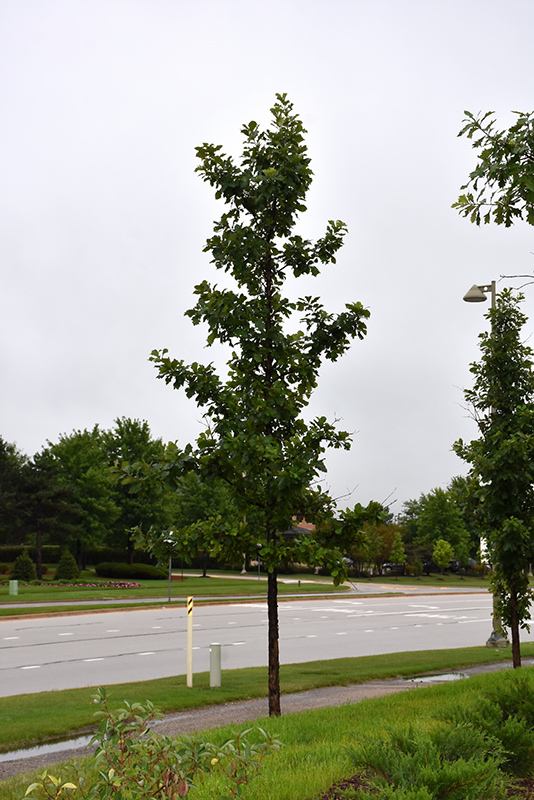PLANT FINDER
Urban Pinnacle Bur Oak
Quercus macrocarpa 'JFS-KW3'
Height: 55 feet
Spread: 25 feet
Sunlight:
![]()
Hardiness Zone: 3a
Other Names: Mossycup Oak
Description:
An impressive variety with its picturesque narrow upright habit of growth and strong central leader; great for landscape or street use; extremely small acorns for a bur oak; very tough and adaptable, disease resistant, heat and drought tolerant
Ornamental Features
Urban Pinnacle Bur Oak has dark green deciduous foliage on a tree with an oval habit of growth. The glossy lobed leaves turn yellow and in fall. However, the fruit can be messy in the landscape and may require occasional clean-up. The furrowed black bark adds an interesting dimension to the landscape.
Landscape Attributes
Urban Pinnacle Bur Oak is a dense deciduous tree with a shapely oval form. Its relatively coarse texture can be used to stand it apart from other landscape plants with finer foliage.
This tree will require occasional maintenance and upkeep, and is best pruned in late winter once the threat of extreme cold has passed. It is a good choice for attracting squirrels to your yard. Gardeners should be aware of the following characteristic(s) that may warrant special consideration;
- Messy
Urban Pinnacle Bur Oak is recommended for the following landscape applications;
- Accent
- Shade
- Vertical Accent
Planting & Growing
Urban Pinnacle Bur Oak will grow to be about 55 feet tall at maturity, with a spread of 25 feet. It has a high canopy with a typical clearance of 6 feet from the ground, and should not be planted underneath power lines. As it matures, the lower branches of this tree can be strategically removed to create a high enough canopy to support unobstructed human traffic underneath. It grows at a medium rate, and under ideal conditions can be expected to live to a ripe old age of 300 years or more; think of this as a heritage tree for future generations!
This tree should only be grown in full sunlight. It is very adaptable to both dry and moist locations, and should do just fine under average home landscape conditions. It is considered to be drought-tolerant, and thus makes an ideal choice for xeriscaping or the moisture-conserving landscape. It is not particular as to soil type or pH. It is somewhat tolerant of urban pollution. This is a selection of a native North American species.


